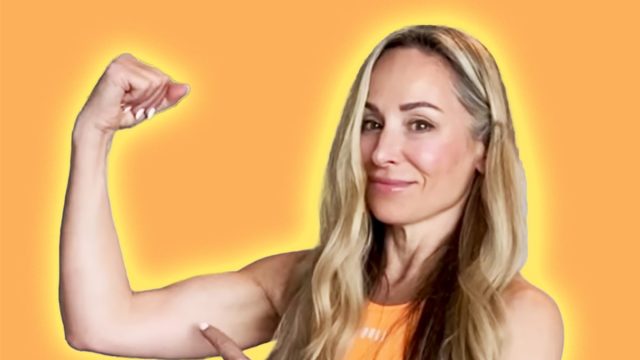Trainer, 58, Lost 15 Pounds and Blasted Belly Fat with These 4 Habits

Are you in your fifties and feel losing belly fat is impossible? One personal trainer and expert is here to tell you this isn't the case. Michaela Bentley is a CPT & Nutrition coach. At the age of 58, she looks half her age! She maintains that she has a better grasp of diet and exercise than she did in her forties. In a recent post, she revealed how she lost 15 pounds and got into the best shape later in life. "In my 50s I went full ninja on belly fat. Here's what I did," she wrote.
She Tried "Literally Everything" to Lose 15 Pounds at 50
"If you're reading this, I was probably a lot like you. I had reached 50 and had tried literally everything to lose the extra 15 pounds of belly and back fat. Nothing I was doing was working and I just kept gaining more weight," she says in the post.
She Was Active and "Resorted to Crazy Diets"
"I have always been active, and was still active, probably more active than I had been previously in an attempt to get things under control. I even resorted to crazy diets to try to lose the midlife spread," she continued.
RELATED: This Is Exactly How to Lose Body Fat This Year
Once She Became a Personal Trainer She Figured Out What Worked
"Finally, I decided to go back to school and become a personal trainer. I thought, well if I can learn how to get control of this maybe I can help other women in the same situation. Learn about it, I did! 🙌Here's what worked," she wrote, revealing the four habits.
Lifting Weights
The first thing that worked to blast belly fat was unsurprisingly, strength training. "Lifting weights CONSISTENTLY with a plan that incorporates progressive overload. All this means is that you are added load and difficulty over time in order to avoid plateaus," she writes.
Moving More
Her next habit? Moving more, "a lot more," she admits. "As a society we've become sedentary. Most of us spend a good majority of the day sitting at a desk. If we want to shake things up, metabolically we have to move more. Try adding intentional steps to your routine. Aim for at least 8000k-10000 a day."
Food Journaling and Tracking
The fourth habit? "Start a food journal and preferably track your food through a tracking app," she revealed. "Most of us have no clue exactly what we're eating and in what quantities. I can't tell you how many women tell me they eat under 1,500 cal a day and then when we look at their food journal, they're actually eating almost double that."
RELATED: 7 Simple Daily Exercises To Shrink Hanging Belly Fat
Seeing a Doctor
"If you're struggling with symptoms of perimenopause or menopause, see your doctor," she says. "I had a truckload of symptoms that I had no idea were related to my declining hormones. Getting my hormones back into balance not only helped with the symptoms I was having but it helped me improve my sleep and general mood which in turn, helped me reduce stress and lose the weight." And if you enjoyed this article, take advantage of these 20 Superfoods for People Over 50.




